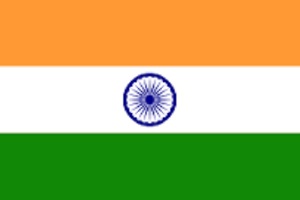Magnum opus is the only word to describe this new book, "The Harambee Factor: India - Africa Economic and Development Partnership". Authored by former Indian Ambassador to the African Union Gurjit Singh, this 500-page book details every component of this development partnership.
Ambassador Gurjit Singh is a former Indian diplomat with 37 years of experience. He served as India's ambassador to Ethiopia, the African Union, Germany, Indonesia, and ASEAN.
What is this book about?
Today India-Africa relationship constitutes a vibrant partnership between the two continents, animated by the spirit of developing together as equals, focusing on capacity building, development cooperation and economic and technological initiatives. And in this book, he deftly explained the evolution of India's African policy. This book could be one essential instrument in order to comprehend how India's African policy actually functions and how they help the continent.
This spirit of cooperation is the connecting thread of the book. The word Harambee is a Swahili word for cooperation. This book consisting of 12 chapters, recounts and examines the evolution of Indian development cooperation with Africa.
What is India's mode of engagement with Africa?
The main components of India's development partnership are Lines of Credit (LoC), Grant assistance, Small Development Projects (SDP), Technical Consultancy, Disaster Relief and Humanitarian aid, as well as capacity-building programmes under the Indian Technical and Economic Cooperation Programme. In the book, the author has detailed all the formal and informal institutions of cooperation, which include the ITEC programme (1964), the Focus Africa Programme (2002), The IDEAS Initiative and LOCs (2004), The Team-9 (2004), The Pan African E-Network Project (2005), India Africa Business Conclave (2005), India Africa Summit Process (2006), and India Africa Forum Summit (IAFS).
Indian development partnerships are distinguished from conventional partnerships by their emphasis on the micro- rather than the macro-sustainability of initiatives.
The India Africa Forum Summit (IAFS) would be possibly the most notable among the prominent multilateral platforms formed by Indian and African politicians. Starting in 2008, today it has become one of the largest regular diplomatic gatherings of African leaders. There have already been three editions: in 2008 in India, in 2011 in Ethiopia, and in 2015 again in India.
The COVID pandemic has caused the IAFS 4 to be delayed, although it should still occur later this year, possibly in Mauritania. The author's account of his experiences as the Sherpa for IAFS II is a genuine pleasure for the readers.
What distinguishes the book?
The author, a former diplomat, could easily spell out the internal challenges the Indian Foreign Ministry is experiencing. The intense competition among traditional and rising countries to engage with Africa has prompted many to refer to it as the "new scramble for Africa."
Unfortunately, there isn't much literature that expressly discusses the development collaboration between India and Africa. Given the dearth of academic writing on the subject, the author scores high by collating all the partnership angles right up to the start of the Covid pandemic. To date, no other book has managed to analyse the Indian LoCs or ITEC programmes at such length, taking into account both their historical context and present state.
About China Question?
The expensive infrastructure development initiatives like the Belt and Road Initiative (BRI) are frequently used to characterise China's influence in Africa. During the past 20 years, China has invested billions in constructing ports, motorways, trains, and dams in nations ranging from South Africa to Egypt. In contrast, the foundation of Indian involvement in Africa is the development of human and social capital.
Through its numerous programmes, India has made significant investments in building institutional, political, and educational ties with leaders and populations in practically all African nations. Indian investment supports its policy of building partnerships and people-to-people linkages, whereas China maintained its focus on massive infrastructure projects. India does better, the author claims, despite China doing more.
Who should read this book?
It takes a lot of work to compile and present this much information, so the author deserves much credit for his efforts. An updated compilation of all the components of the India-Africa development partnership can be found in this book. Lately, studying India-African relations is becoming more mainstream in India, as seen by the Symbiosis School of International Studies (SSIS) introduction of a Masters of Art in African Studies programme (Geo-economics and Foreign Policy).
Students who are interested in learning about India-Africa ties will find this book to be precious. Similarly, this book will be handy for students interested in the role of emerging powers from the South, international development, foreign policy, and global political economy. Nonetheless, a wider audience, including policymakers, will also find it interesting. In fact, no one interested in India's engagement in Africa can afford to not read this book.
Opinions of Friday, 16 June 2023
Columnist: Samir Bhattacharya



















